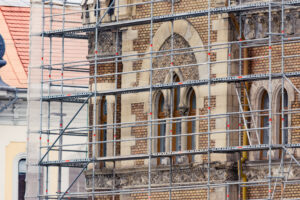
Reviving History: Transforming Buildings with the International Existing Building Code
The IEBC encourages the continued use and reuse of existing buildings, including historic buildings, by enabling changes in occupancy and use types without requiring full compliance with building features otherwise required for new construction.
This month, the Advisory Council on Historic Preservation (ACHP) adopted its Policy Statement on Housing and Historic Preservation which supports the International Code Council’s International Existing Building Code® (IEBC) as a resource for building conversions. The ACHP Policy Statement follows an October 2023 White House launch of a new guidebook to facilitate commercial to residential conversions to address post-pandemic office vacancies.
SEE RELATED: Commercial to Residential Conversions Encouraged by HUD and the Biden-Harris Administration
Created by the National Historic Preservation Act (NHPA), the ACHP is an advisory council that works to promote the preservation, enhancement and sustainable use of diverse historic resources in the United States.
“The Code Council welcomes ACHP’s support for the role the IEBC can play in enabling building reuse—including of historic buildings, which present unique challenges,” said Code Council Chief Executive Officer Dominic Sims, CBO. “With the increased interest in converting underutilized commercial buildings to residential, it’s imperative that communities, design professionals and developers leverage the IEBC’s flexibilities, which can facilitate their efforts through faster completions and generate cost savings.”
Historic Conversions Using the IEBC
Revitalizing historic buildings offers significant advantages to communities, as it preserves their cultural heritage and architectural character. These converted spaces often serve as hubs for economic activity, attracting more businesses, tourists and investors, thus contributing to improved income opportunities.
Additionally, repurposed historic buildings offer versatile and unique spaces that can offer a wide variety of community needs, ranging from housing and commercial use to cultural and recreational venues, enhancing the overall quality of life in the area.

By adhering to the IEBC standards, repurposed historic buildings will undergo necessary upgrades to meet modern safety and accessibility requirements without compromising their original character while minimizing costs and construction timelines. The IEBC fosters sustainable development by reducing the environmental impact associated with new construction while simultaneously revitalizing existing areas.
International Existing Building Code
The IEBC plays a crucial role in ensuring the safety and functionality of existing structures worldwide. By providing standardized guidelines and regulations, it helps maintain structural integrity, fire safety and accessibility in older buildings.
Adopted by 45 states, the IEBC encourages the continued use and reuse of existing buildings, including historic buildings, by enabling changes in occupancy and use types without requiring full compliance with building features otherwise required for new construction.
The 2024 IEBC is now available for purchase. Learn more here.








